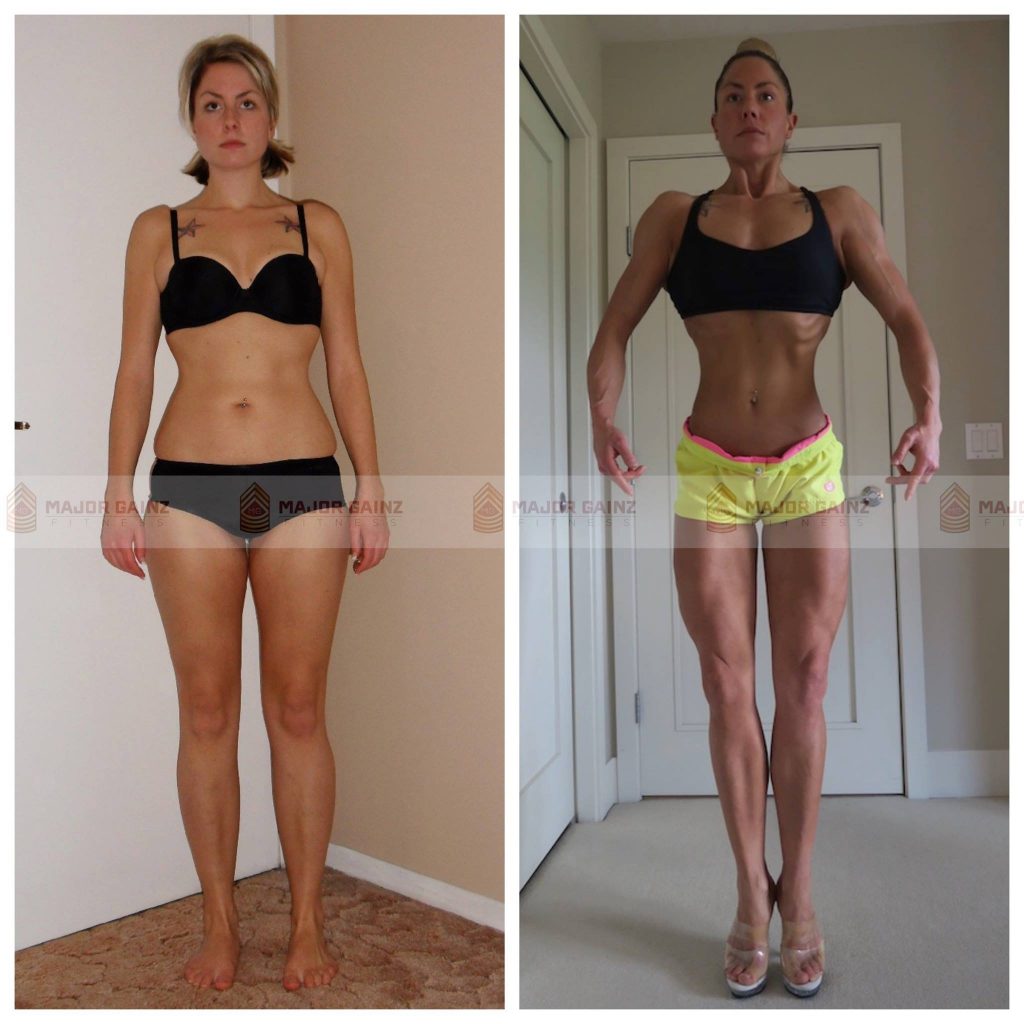I train a lot of women.
In fact, if I broke down my client roster I’d say it’s about a 50/49/1% split (women/men/Centaur1). I live in a little strength & conditioning bubble where the bulk of women I work with don’t blink an eye at the idea of adding muscle to their frame.
In fact, most want that to happen.
Today’s guest post by my boy, Dean Somerset, explains why most women can (and should) want the same thing.
NOTE: Dean and Dr. Mike Israetel released an amazing resource this week, The L2 Fitness Summit Vol 1, which delves deep into assessment and how to get your clients results (specifically, how to get them diesel).
It’s really, really good (and it’s on sale for this week only)

Women and Hypertrophy: Why Should Jill Get Jacked?
The vast majority of my clients are female, somewhere around 70% at any given time. The reason these women are training with me varies a lot, either they’re working against some medical disorder, an injury, or other significant problem, or they’re training for some performance goal like running a faster marathon or deadlifting twice their bodyweight.
In most of their goals, the thought of getting bigger muscles often ranks somewhere between stubbing their toe and waxing their eye lashes off.
In some instances it’s a pragmatic element.
If a client has invested a significant amount of money into their wardrobe and suddenly their lats are just too gunny, they’re going to have to spend a lot of money on alterations or worse, go shopping for new clothes.
It might come down to spousal support too.
It’s all too common for a female client to say their husband told them they don’t want them to turn into a man, a statement so ridiculous to hear that it’s hard to bite my tongue.
Guys, 3 lbs of muscle on a female will not make them manlier than you. Maybe you should put on a couple pounds of muscle and not worry so much about your girlfriend or wife out lifting you.

In any case, training to gain some muscle (read, some. It’s very hard for anyone to gain a lot, male or female) is very much a good thing for most if not all goals you could have in the gym.
- Muscle looks better at almost any body fat percentage than not having it.
- Muscle helps performance goals, like doing a chin up or deadlifting a dump truck
- Muscle improves cardio performance, making you a faster runner, cyclist, or whatever the rage is these days
- Muscle demands calories, which means you can justify eating a little more without affecting your body composition
- Muscle can improve bone density, hormonal function, and sleep quality.
- Muscle helps yoga pants or your favorite pair of “butt jeans” fit better.
- Science.
Now, will training for hypertrophy make you bulkier?
Possibly, but there’s a lot of factors that have to go into that.
First, it’s a long process to see notable increases in muscle, and for the purpose of this article we’ll assume a 5% increase in body mass as notable.
So for someone who weighs around 130 lbs, a 5% increase would be around 6.5 lbs.
Male or female, an individual would look notably different with an extra 6.5 lbs of muscle on their build.
If you talk to most competitive physique or figure competitors, a 6.5 lbs gain of muscle can take a very long time of very dedicated workouts, nutrition, and frequency. What would be reasonable would be to see about 3 lbs a year of actual muscle gain in a caloric surplus, so if you’re looking to gain, you’ll likely be dedicated to 4-6 hypertrophy-focused workouts a week for a full 12 month phase while eating enough to support that development.
This isn’t to say it’s impossible to gain more than this in shorter time frames, but just what seems reasonable for a lot of female lifters.
Here’s an example of this process in action with a friend of mine, Kait Cavers. She looks to compete in figure competitions and dedicates a large portion of her training calendar to gaining muscle.
She recently posted a before and after pic of her at the same weight, and you should see how awesome a comparison it is:

To be clear, as she stated in her post, it’s not about one being better than another, or which one would be preferred, but just showing that you can look vastly different at the same body weight with differences in muscle and body fat.
She’s considerably more muscular in the right pic, but her waist and hips are miniscule compared to the left.
Now if you didn’t want to dedicate to this kind of work load, the gains of muscle will be much less, and if you wanted to phase in hypertrophy training for a few months out of the year versus make it your whole focus all the time, you could do different things without worry about packing on some lat muscle or thicker delts.
That’s the great thing about training: you don’t have to do the same thing all the time and can cycle your training calendar throughout the year to focus on different stuff as you see fit. Hypertrophy can fit into the flow, be the entire goal, or just have a sprinkling for flavor on other stuff as you go.
This is a concept used by another friend, Ben Bruno, when he trains a lot of Victoria Secret supermodels. None of them would be judged to be too bulky, but most of their training uses heavier resistance training, hypertrophy protocols, and intense conditioning elements.
Example #1
Example #2
Example #3
Example #4
Aside from gaining muscle, what other good could training for hypertrophy offer?
If you’re training for a specific goal, such as powerlifting, running, or even weight loss, shifting gears for a phase or two can offer a type of cross training that can help refresh your mind about training, and give your body a break from the stuff you were doing consistently.
An example of this is my own wife. 10 months of the year she puts in a lot of miles on her bike as a competitive road and track cyclist. During the bulk of her in-season, she’s on the bike upwards of 15-20 hours a week with a mix of long duration low intensity rides and max effort sprints.
During the offseason, she wants to jump into some heavier weights, which definitely have their place in her program, but going straight from cycling and minimal weight training into maximal resistance training isn’t that great of an idea, so we involve a phase of 6-8 weeks of hypertrophy training due to the lower relative loads, and easier recovery compared to max lifting.
This helps to prepare her for the heavier stuff, give her body a break from the bike, and still look to gain a small amount of muscle after a hard in-season, which will help her performance on the bike next year, but also prepare her for the heavier weights of the off season.
Another example was a recreational skier who tore her ACL and needed surgery to fix the injury. During the pre-op phase, we involved work to keep some muscle mass through the quad with lighter loading and moderate volume, and following the surgery her workouts progressed from next to no loading, through to loading to technique failure, and then on to muscular failure through drop sets or extended set options.
A major goal of ACL rehab is to regain quad volume, so we went after it, using the progressive range of motion her knee was re-establishing, and as her strength development allowed.
She’s back on the ski hill now and having a great time 6 months after her surgery.
Gaining muscle can be a very challenging goal, especially if someone is already somewhat well established in their training and have been at it for a while. Because of the requirements to see notable increases in muscle, women shouldn’t fear training for hypertrophy, but should involve it in their programming on a regular or even occasional basis to help augment their goals, what ever those may be.
Having some extra muscle is often a major benefit under any goal set, including fetching water from up the hill.
Maybe if Jill lifted a bit more, she wouldn’t have come tumbling down after Jack, but would have farmer carried that shit all the way back home with Jack on her shoulders, straight up Medal of Honour style, so he could get some medical attention to fix that broken crown.
She could use that water to make some tea to sip while thinking if only Jack had trained he wouldn’t have fallen from such a simple task, but that’s none of Jill’s business.
Special Limited Time Offer
Dean Somerset and Dr. Mike Israetel filmed 11 hours of amazing content at the recent L2 Fitness Summit and it’s nuts.
Half of it is Dean breaking down assessments and the other half is Dr. Mike talking about getting people jacked and swole.
It’s on sale THIS WEEK ONLY (12/5-12/10) at a heavily discounted price of $50 off the regular price. As if the content and quality of presenters isn’t enough to entice you: If you’re still seeking CEUs to finish off your certification requirements this bad-boy offers 1.2 CEUs via the NSCA.
Holla.



